This post has not been edited by the GamesBeat staff. Opinions by GamesBeat community writers do not necessarily reflect those of the staff.
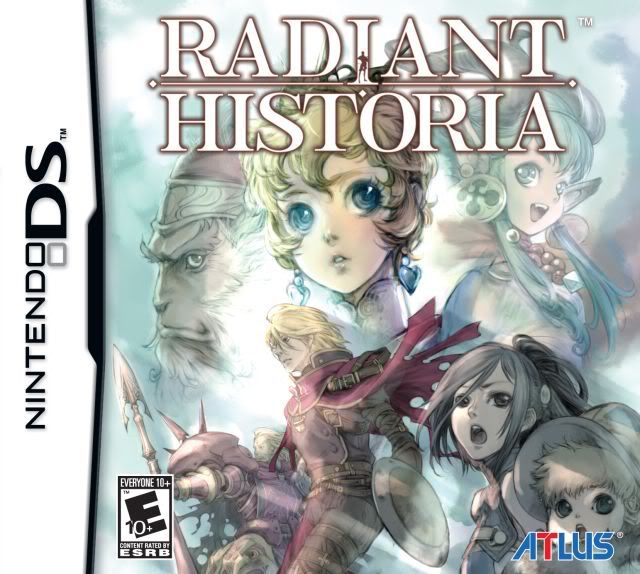
What if you could go back and change history? Would you save the world? Or use it to avoid spiky traps as you rescue a princess from an evil Vizier in ancient Persia? Games have done their part in trying to answer that question in a number of fun ways whether it's gathering together a crack team of party members across history in Chrono Trigger to short snippets of lifesaving hops in Prince of Persia. Now, Atlus is doing their part with Radiant Historia, an RPG that hits the epic circuit on the DS with plenty of old school charm.
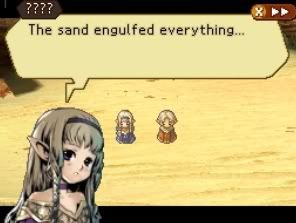 Historia doesn't pull any punches from the start: the world has died, turning into a huge desert, and two child-like beings wonder at how it could have been avoided. Fast forward to the “present” where players are introduced to Stocke, an agent working for the kingdom of Alistel that is currently at odds with another kingdom named Granorg. After a mission goes terribly wrong, these mysterious beings pull Stocke into a place appropriately called “Historia” and tell him that the book he was given by his mysterious employer is the key to saving the future. They prove it by sending him back to before his mission had failed, and when he sees this power for himself by altering how things play out, becomes their last hope.
Historia doesn't pull any punches from the start: the world has died, turning into a huge desert, and two child-like beings wonder at how it could have been avoided. Fast forward to the “present” where players are introduced to Stocke, an agent working for the kingdom of Alistel that is currently at odds with another kingdom named Granorg. After a mission goes terribly wrong, these mysterious beings pull Stocke into a place appropriately called “Historia” and tell him that the book he was given by his mysterious employer is the key to saving the future. They prove it by sending him back to before his mission had failed, and when he sees this power for himself by altering how things play out, becomes their last hope.
The story doesn't complicate itself with all of the messy rules that usually accompany time travel. You can't jump back to the distant past and assassinate all of the bad guys before they were born or travel to the distant future because, well, there is no future. Stocke is also fully aware of the changes despite how history plays out – he remains relatively unchanged. He has also been forbidden to tell anyone of his new talent but it doesn't prove to be a real problem aside from a few awkward moments. Historia takes place in a small section of history between Alisten and Granorg, but one that proves to be a collection of the most important events in determining whether the world lives or dies.
The story also does a fantastic job in remaining consistent though some of the answers at the end don't make a lot of sense. There are also many interesting characters, some of them proving to be a lot more than the typical cardboard cutout villain that they may first appear as. The political intrigue that Granorg's own characters dabble in is particularly slippery and the story deftly illustrates the casualties of war between both kingdoms far past the soldiers lost on the field. Even some of the characters that Stocke and his party meet only in passing take on greater meaning when a side quest reveals how important they might be.
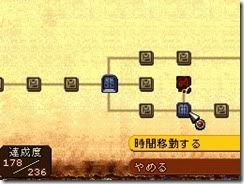
This is how the White Chronicle looks at time, each icon representing a summary of an important event. Notice how it splits into two different timelines. This was also the only good picture I could find which explains why its in Japanese.
Players will be juggling two histories in order to create a new future from; a “Standard History” and an “Alternate History”, both of which are created from one key decision that Stocke makes at the start of the game. Events that occur in one timeline can influence what happens in the other one and the story does a brilliant job in weaving in and out of each moment to keep things moving along. Key decisions that come up can also decide whether there will be a tomorrow to look forward to – usually with immediate effects – but thanks to the White Chronicle, Stocke can almost always try something else when he accidentally dooms the world.
Key to Stocke's ability in tracking the changes he can effect on both histories is the mysterious White Chronicle. As important events come up, they're recorded in the book allowing the player to backtrack on what had happened without feeling lost. At specific points, it also allows him to travel back and alter their outcome of certain events. By traveling to a history that plays out slightly differently, Stocke may also learn something new that can help him achieve his goals that might otherwise be impossible. In this way, time becomes his greatest weapon and Radiant Historia makes it an incredibly versatile, and exciting, aspect of the gameplay.
It can sound incredibly complicated, but Radiant Historia makes it easy especially in the beginning as it guides the player through a few quests to help understand how things work. Not everything can be changed at will, though there are still plenty of opportunities to rewrite history. In the same way that Chrono Trigger gives the player bite-sized, yet pivotal, events to alter, Radiant Historia delivers.
These special events can involve rescuing someone from death by warning them ahead of time about something or delivering a letter that might not otherwise have found its way home. All of these are small enough to easily manage but often have far reaching rewards especially in affecting what the player will see during the ending. Some even come with a few stories of their own expanding on the world, or on a more personal level, certain characters. Though some of these seem small when looking at the bigger picture, it's still a rush to discover that you've saved someone who had otherwise ended up as a corpse in another history, setting things right.
 What Stocke can't avoid with time travel is the bread and butter of most any RPG: combat. Enemies can be seen in Radiant Historia and Stocke can even swing his sword to knock them out and either surprise them with an attack or get around them, but no matter the approach, it's still going to be a big part of the game. Even here, Historia tweaks things a bit here to make it different, yet retain that turn-based charm.
What Stocke can't avoid with time travel is the bread and butter of most any RPG: combat. Enemies can be seen in Radiant Historia and Stocke can even swing his sword to knock them out and either surprise them with an attack or get around them, but no matter the approach, it's still going to be a big part of the game. Even here, Historia tweaks things a bit here to make it different, yet retain that turn-based charm.
Enemies are set up on a 3×3 grid – enemies closest to the party in the front row can deal the most physical damage, yet they're also as exposed. Those further away in the back row won't hurt the party as much, but the same goes for how much damage they also receive. Spells are also the great equalizer regardless of where the monsters might sit and the party itself doesn't have to worry about positioning themselves anywhere. Physical attacks are also the only reason for range to matter since the player can order their three-character party to attack enemies regardless of where they are, or shove enemies further back to diminish how much hurt they deliver, but that's not all.
Your party can “push” enemies around on the grid and rack up combination attacks that are rated every round. By pushing enemies into each other, stacking them, you can kill two or more monsters with one well placed spell – or attack. Though enemies won't stay stacked after the round is over and move off to other spots on a grid, planning how to manipulate them into giving you the best bang for your efforts can often determine how quickly combat is resolved – or how much time you'll spend healing party members afterwards. And not every monster can be shoved around.
Later, you can even set traps on the grid, turning it into a field of death for monsters to be shoved into. All of this helps your combo levels for that round. The better your performance, the better your bonuses for gold and experience when it's over. This light approach to tactics also helps to make combat entertaining enough not to feel too like a grind factory when encounters start to feel like puzzles to be solved. Going back in time from far in the future to beat on goblins won't net you the same experience as it used to, yet there's some satisfaction in confronting a formerly tough-as-nails boss and then steamrolling over them just for kicks.
Though the party doesn't have to worry about moving around on its own grid, the top screen displays the turn sequence showing who will be going next. Similar to fiddling with history in a microcosm, players can swap places with an enemy or another party member once during their turn, altering the sequence. This creates opportunities to chain together push attacks before delivering a brutal finish to a stack of foes – or rescue someone in trouble in the nick of time – deepening the tactical options that the player has. Being able to shuffle party members back and forth saved my party from several near-death experiences, especially against some of the tougher bosses.
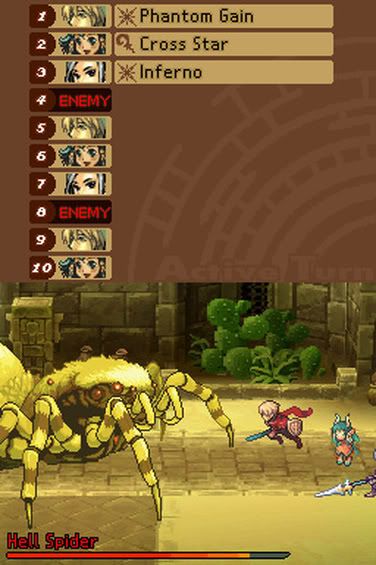 Historia also makes managing your troupe of heroes easy. At one point, you'll have more members than you can field – only three characters at any one time can fight. Even if they sit out, they'll still be able to earn experience keeping the grind as minimal as possible. However, they don't earn experience when they leave the party because of the story. Save points are also well spaced, though not all of them tie into a node that corresponds to where you can jump to in the White Chronicle. Visiting earlier events also teams you up only with those characters that were available at the time since only Stocke doesn't change – but they do keep whatever levels you had ground them up to from the last time.
Historia also makes managing your troupe of heroes easy. At one point, you'll have more members than you can field – only three characters at any one time can fight. Even if they sit out, they'll still be able to earn experience keeping the grind as minimal as possible. However, they don't earn experience when they leave the party because of the story. Save points are also well spaced, though not all of them tie into a node that corresponds to where you can jump to in the White Chronicle. Visiting earlier events also teams you up only with those characters that were available at the time since only Stocke doesn't change – but they do keep whatever levels you had ground them up to from the last time.
The only thing that consistently bothered me was that certain nodes force the player to either fight through several events to get to the one they want to revisit, or plow through a series of cut scenes by mashing on the Start button the skip them. This can get pretty repetitive. Not all of the dialogue changes as much as you might think and Stocke can often sound as if he hadn't changed anything until he gets to the part that matters.
The art direction uses chibi-style characters in the gameplay with plenty of JRPG emoticons to let the player know just what they're thinking. Alistel's industrialised look and Granorg's classical stonework, Cygnus' deserts, and the forest of Celestia give each area of the game nicely contrasting degrees of visual personality. The only downside that I found odd were the character portraits. They're well drawn, but whenever dialogue shows up, they remain fixed with the same look despite what's going on in the game behind them. It just felt odd delivering bad news to a character and then seeing their portrait remain smiling through the sad dialogue to follow.
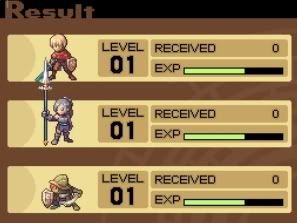
You start the game off with trusty Raynie and Marco. I used them the most as hey were my favorite "go to" characters when it came to battle. CLUTCH.
Even with these shortcomings, I had an amazing time in the fifty-plus hours that it took me to get through the main quest. That also includes the time spent trying to tackle as many of the side stories as possible. What can I say? I tried to make it as nice a future as I could and I'm sure I didn't get everything. Fortunately, the game allows you to have a “Clear Save” and allow you to keep exploring the dungeons it creates within time to find hidden skills or simply grind up to your heart's content.
Radiant Historia continues to prove that the Nintendo DS continues to be the home to some of the best JRPGs of this generation. An incredible journey from start to finish, even the ending tugged at my imagination to take another trip down into the past to change the destiny of someone I might have missed along the way. Creative, fun, and full of charm, this time traveling quest deserves a place in any adventurer's history.
